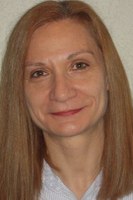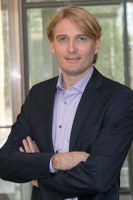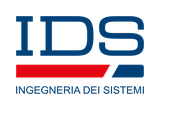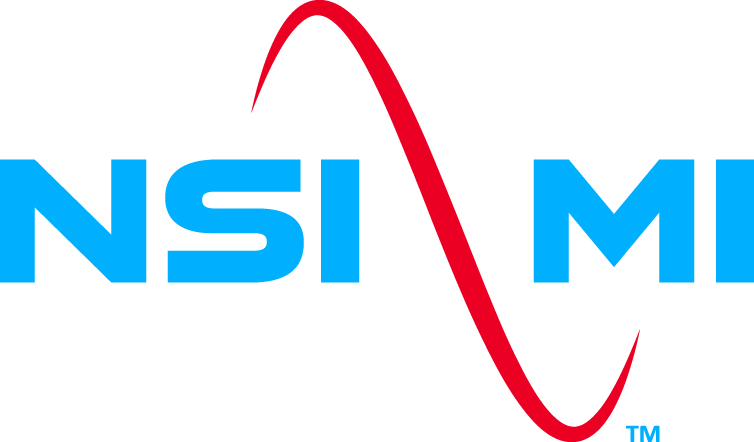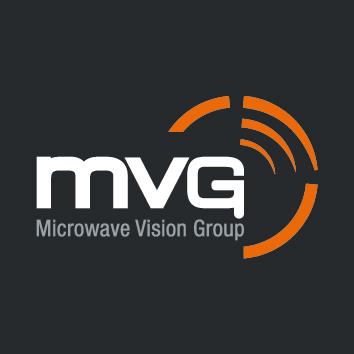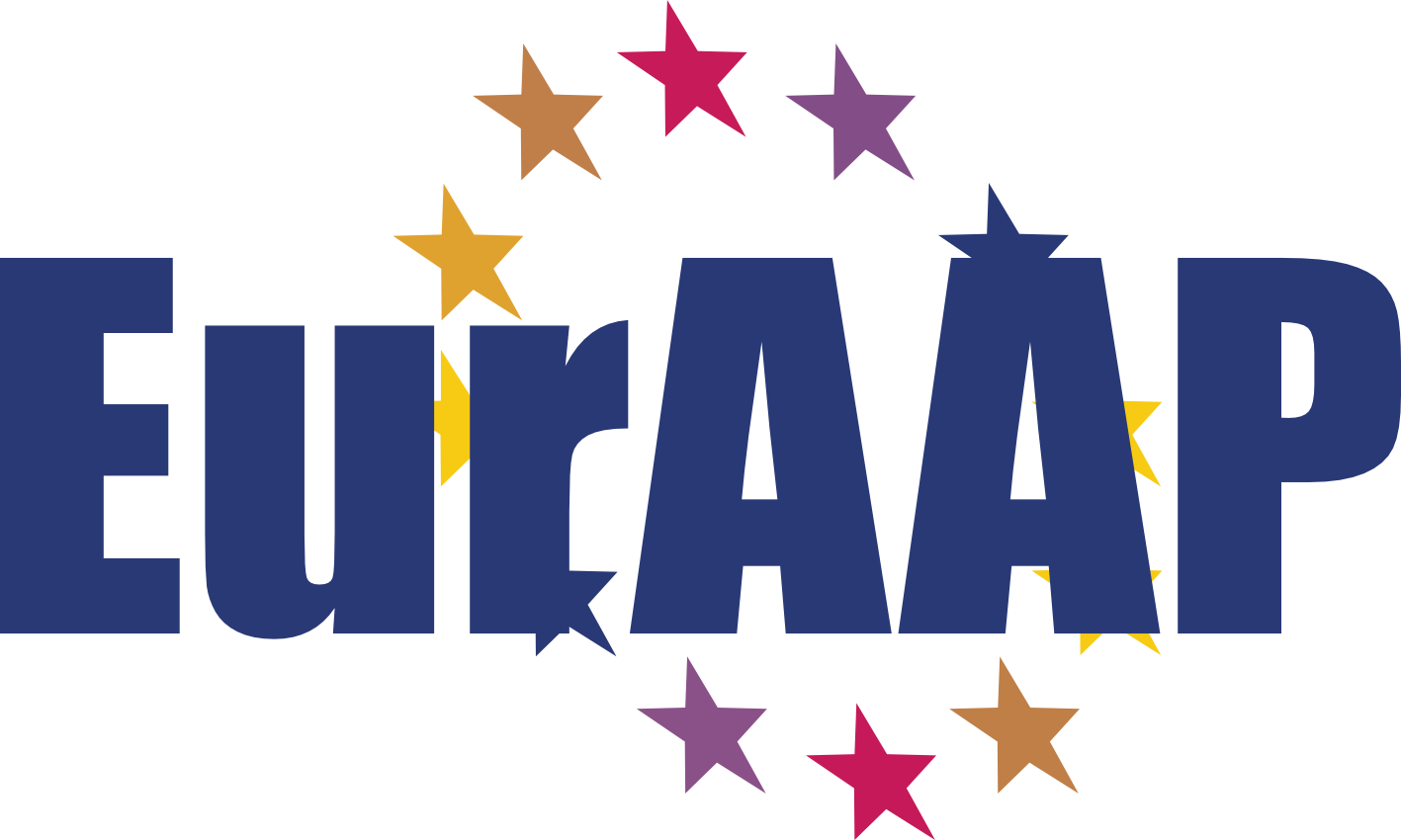Invited Speakers
|
|
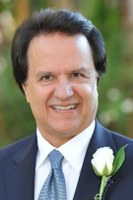
|
Professor Yahya Rahmat-Samii, UCLA, US
Yahya Rahmat-Samii is a Distinguished Professor, a holder of the Northrop-Grumman Chair in electromagnetics, a member of the U.S. National Academy of Engineering (NAE), a Foreign Member of the Chinese Academy of Engineering (CAE) and the Royal Flemish Academy of Belgium for Science and the Arts, the winner of the 2011 IEEE Electromagnetics Field Award, and the Former Chairman of the ECE Department, University of California at Los Angeles (UCLA). He was a Senior Research Scientist with the Caltech/NASA’s Jet Propulsion Laboratory. He has authored or coauthored over 1100 technical journal and conference papers, over 35 book chapters and six books. Prof. Rahmat-Samii is a fellow of IEEE, AMTA, ACES, EMA, and URSI. He is a recipient of IEEE Third Millennium Medal, 2000 AMTA Distinguished Achievement Award, Honorary Doctorate Causa from the University of Santiago de Compostela, Spain, 2002 JPL Technical Excellence Award, 2005 URSI Booker Gold Medal, 2007 IEEE Chen-To Tai Distinguished Educator Award, 2009 Distinguished Achievement Award of the IEEE AP-S, 2010 UCLA School of Engineering Lockheed Martin Excellence in Teaching Award, 2011 campus-wide UCLA Distinguished Teaching Award, 2016 John Kraus Antenna Award of the IEEE AP-S, and 2016 NASA Group Achievement Award, 2017 ACES Computational Electromagnetics Award, 2017 IEEE AP-S S. A. Schelkunoff Best Transactions Prize Paper Award, and 2019 Ellis Island Medal of Honor. He is the designer of the IEEE AP-S logo and was the 1995 President of the IEEE AP-S and 2009–2011 President of USNC-URSI and served as an IEEE Distinguished Lecturer.
CubeSat Antennas: Amazing Opportunities for Developing Out-of-the-Box Antennas
CubeSats represent a remarkable revolution in the arena of satellites. Their small size and low cost have enabled space missions which seemed impossible with conventional satellites. A key element in furthering the potential of CubeSats is the development of antenna systems that can meet the data-rate and spatial resolution requirements for future space missions. The potential of CubeSats combined with the tradeoff between mechanical complexity and RF performance offer amazing opportunities to antenna engineers to be innovative. While many initial missions used low-gain antennas due to their ease of mechanical integration, emerging CubeSats require high-gain antennas that can stow in a small volume during launch and deploy reliably in space. This plenary talk describes the challenges and opportunities that CubeSats provide antenna engineers, and some out-of-the-box concepts that have been recently developed to facilitate advanced space missions. In particular, the talk focuses on the design of deployable high gain aperture antennas that can meet the demands of remote sensing, deep space missions and Internet of Space (IoS) with particular importance to the design tradeoffs engineers must account for while developing high gain CubeSat antennas. As the vision of affordable space missions and global connectivity becomes a reality, the author looks forward to many more developments in the field of antenna engineering.
|
|
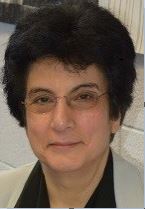
|
Professor Sana Salous, Durham University, UK
Sana Salous holds the Chair of Communications Systems at Durham University since 2003. She has radio propagation experience from high frequency (HF) to millimeter wave frequency bands. To support these studies she has developed novel channel sounders based on digital frequency sweep techniques.
She acted as Chair of Commission C of the International Union of Radio Science (2014-2017) and co-chair of the Working Group on Radio Channels in the COST Action IRACON. She is a member of the UK delegation to the Study Group 3 of the International Telecommunications Union and a regular contributor to working party 3K. She is also Editor in Chief of the journal Radio Science.
Recent ITU propagation models for millimeter waves
Fifth generation mobile radio systems are expected to use a variety of techniques and frequencies toward providing high data rates to the user. This has led to a concerted international effort towards characterizing the radio channel in the higher frequency bands particularly in the frequency range of 24-86 GHz following the World Radiocommunications Conference in November 2015 (WRC15) and the recent allocations in WRC19. This talk gives an overview of radio propagation measurements and models in these frequency bands that have been adopted in ITU recommendations and the international effort towards achieving such models.
|
|
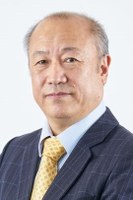
|
Professor Zhang Yue Ping, Nanyang Technological University, Singapore
Yueping ZHANG is a full Professor with the School of Electrical and Electronic Engineering at Nanyang Technological University, Singapore, a Distinguished Lecturer of the IEEE Antennas and Propagation Society (IEEE AP-S), a Member of the IEEE AP-S Paper Award Committee, and a Fellow of IEEE. Prof ZHANG was a Member of the IEEE AP-S Field Award Committee (2015-2017) and an Associate Editor of the IEEE Transactions on Antennas and Propagation (2010-2016). Prof ZHANG has published numerous papers, including two invited and one regular papers in the Proceedings of the IEEE and one invited paper in the IEEE Transactions on Antennas and Propagation. He is probably the first and only Chinese radio scientist who has managed to publish a historical article in an English learned journal such as IEEE Antennas and Propagation Magazine. He received the Best Paper Award from the 2nd IEEE/IET International Symposium on Communication Systems, Networks and Digital Signal Processing, July 18–20, 2000, Bournemouth, U.K., from the 3rd IEEE International Workshop on Antenna Technology, March 21–23, 2007, Cambridge, U.K., and from the 10th IEEE Global Symposium on Millimetre-Waves, May 24–26, 2017, Hong Kong, China, respectively. He received the prestigious IEEE AP-S Sergei A. Schelkunoff Prize Paper Award in 2012. Prof ZHANG holds 7 US patents. He has made pioneering and significant contributions to the development of AiP technology. His current research interests include the development of antenna-on-chip (AoC) technology and characterization of chip-scale propagation channels at terahertz for wireless chip area network (WCAN).
Antenna-in-package (AiP) Technology
Antenna-in-package (AiP) technology integrates an antenna or antennas with a radio or radar transceiver die (or dies) into a standard surface mount package. AiP technology well balances performance, size, and cost. Hence, it has been widely adopted by chip makers for radios and radars. It is believed that AiP technology will also provide elegant antenna and packaging solutions to the fifth generation cellular networks and beyond operating in the lower millimetre-wave (mmWave) bands. This talk will provide an overview of the development of AiP technology. It will consider antennas, packages, and interconnects for AiP technology. It will show that the antenna choice is usually based on those popular antennas that can be easily designed for the application, that the package choice is governed for automatic assembly, and that the materials and processes choices involve tradeoffs among constraints, such as electrical performance, thermal-mechanical reliability, compactness, manufacturability, and cost. This talk will also show a probe-based setup to measure mmWave AiP impedance and radiation characteristics. It goes on to give an AiP example implemented in a low-temperature co-fired ceramic process.
|
|
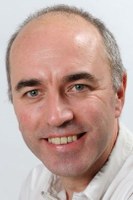
|
Professor Guy Vandenbosch, KU Leuven, Belgium
Guy A. E. VANDENBOSCH received the M.S. and Ph.D. degrees in Electrical Engineering from the Katholieke Universiteit Leuven, Leuven, Belgium, in 1985 and 1991, respectively. Since 1993, he has been a Lecturer, and since 2005, a Full Professor at the same university. His research interests are in the area of electromagnetic theory, computational electromagnetics, planar antennas and circuits, nano-electromagnetics, EM radiation, EMC, and bio-electromagnetics. His work has been published in ca. 340 papers in international journals and has led to ca. 390 papers at international conferences. Guy Vandenbosch has been a member of the “Management Committees” of the consecutive European COST actions on antennas since 1993. Within the ACE Network of Excellence of the EU (2004-2007), he was a member of the Executive Board and coordinated the activity on the creation of a European antenna software platform. After ACE, from 2007 – 2018, he chaired the EuRAAP Working Group on Software. In the period 1999-2004, he was vice-chairman, in the period 2005-2009 secretary, and in the period 2010-2017 chairman of the IEEE Benelux Chapter on Antennas en Propagation. In the period 2002-2004 he was secretary of the IEEE Benelux Chapter on EMC. In the period 2012-2014, he was secretary of the Belgian National Committee for Radio-electricity (URSI), where he is also in charge of commission E. Guy Vandenbosch is a fellow of the IEEE. From September to December 2014, he was a visiting professor at Tsinghua University, Beijing, China. Since 2017 he is a member of the IEEE Electromagnetics Award Committee.
A Holy Grail Quest: the Concept of Stored Electromagnetic Energy
In this paper the quest for the “final” expressions for the energy stored in a radiator is overviewed. First, the several forms of power and energy that have been defined and used in electromagnetics over the last 100 years are briefly summarized, and their most important characteristics are discussed. In a first step, frequency domain is considered. Starting from two power balance equations, a field based reactive energy is formally defined and compared to the numerous “definitions” already available in literature. Then the concept of recoverable energy is introduced. The differences with reactive energy are pointed out. Moving to time domain, it is possible to write unifying expressions generalizing the concept of reactive energy. It is shown that recoverable energy is just a special case for a specific current evolving in time. Illustrative examples are given where these energies can be used to solve practical problems. The paper clearly illustrates that the concept of stored electromagnetic energy is still not well-understood when a radiator is involved.
|
|
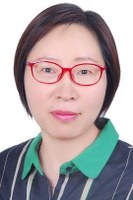
|
Professor Jianhua Zhang, BUPT, China
Jianhua Zhang, received her Ph.D. degree in circuit and system from Beijing University of Posts and Telecommunication (BUPT) in 2003 and now is professor of BUPT. She has published more than 200 articles in referred journals and conferences and 40 patents. She received several best paper awards, including 2016 China Comms, 2008 JCN etc. She received two national novelty awards for her contribution to the research and development of Beyond 3G TDD demo system with 100Mbps@20MHz and 1Gbps@100MHz respectively. She received the second prize for science novelty from Chinese Communication Standards Association for her contributions to ITU-R 4G (ITU-R M.2135) and 3GPP Relay channel model (3GPP 36.814). From 2012 to 2014, she did the 3 dimensional (3D) channel modeling work and contributed to 3GPP 36.873 and is also the member of 3GPP "5G channel model for bands up to 100 GHz". She was the Drafting Group (DG) Chairwoman of ITU-R IMT-2020 channel model.Her current research interests include 5G and 6G, artificial intelligence, data mining, especially in massive MIMO and millimeter wave channel modeling, channel emulator, OTA test and etc. Webpage : www.zjhlab.net.
Application of machine learning to propagation modeling
With the increasing antenna number, wide frequency range, huge bandwidth, and versatile application scenarios brought by fifth generation (5G) and beyond, channel measurement data will be quite huge. Measurement data processing is very time consuming and channel characteristics are difficult to capture and model accurately. Thanks to machine learning, as one of the most powerful artificial intelligence tools, has been successfully demonstrated efficient handling big data and find the hidden rules. Thus, it is reasonable to develop channel models by taking advantage of data mining and machine learning algorithms. In this presentation, some of our attempts of applying big data analytics, especially machine learning algorithms to channel modelling have been principally explained and summarized, including Gaussian mixture model (GMM) based channel multipaths clustering, principal component analysis (PCA) based channel parameter reduction, MIMO channel fading tracking and prediction, and intelligent channel modeling schemes, etc. Finally, the open issues and future research directions of ML application in channel model are discussed.
|
|
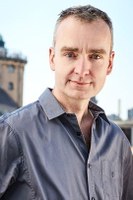
|
PhD, CTO Erik Jørgensen, Ticra, Denmark
Erik Jørgensen joined TICRA in 2003 where he currently holds the position of CTO. For the past decade, Erik has been leading the development of TICRA’s antenna modelling software for electrically large antenna and scattering problems, with a particular emphasis on antennas for space applications. Dr. Jørgensen has designed communication antennas for smallsat and cubesat applications and he has been the project lead on numerous developments performed for the European Space Agency. His research interests include integral equations, higher-order methods, high-frequency methods, and computational electromagnetics in general. Dr. Jørgensen received the MSc and Ph.D. degrees in electrical engineering from the Technical University of Denmark in 2000 and 2003, respectively. In fall 1998, he spent half a year at the University of Siena, Italy. In 2001, he was a visiting scholar at the Radiation Laboratory, University of Michigan, Ann Arbor, Michigan.
Computational Electromagnetics in Space
Computational Electromagnetics (CEM) provides an indispensable toolset for antenna design and performance verification. In this talk, we focus on the modelling challenges arising when designing satellite antennas and platforms, with typical application areas within high-throughput telecommunication systems or Earth observation. Antenna design for space applications imposes very stringent requirements on the CEM algorithms, e.g., a predicted gain accuracy better than a few hundreds of a dB and a dynamic range exceeding 100 dB. Further, the accuracy must be maintained for antennas that are electrically large, e.g., several hundred wavelengths, or platforms exceeding 1000 wavelengths in size. Such extreme accuracy requirements are typically not encountered outside the space segment, implying that specialized algorithms must be developed. We present a review of several CEM algorithms developed particularly for space applications. This includes multiple integral equation methods based on higher-order discretisation schemes, as well as an efficient acceleration method providing a dramatic reduction of the memory and CPU requirements. The special requirements relevant for space applications also imply that extremely fast algorithms are needed for specific classes of antenna problems. Such dedicated algorithms are needed to allow numerical optimization of a very large number of degrees of freedom, necessitating that the antenna performance can be evaluated in seconds without compromising the accuracy. We discuss multiple dedicated solvers, hybridization of solvers, and large-scale optimisation problems. Finally, we apply techniques for quantification of uncertainties when realising antennas with finite manufacturing tolerances. The capabilities of the algorithms are illustrated with practical examples.
|
|
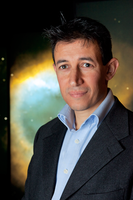
|
Professor Andrea Neto, Delft University of Technology, Netherlands
Andrea Neto (M’00–SM’10–F’16) received the Laurea degree (summa cum laude) in electronic engineering from the University of Florence, Italy, in 1994, and the Ph.D. degree in electromagnetics from the University of Siena, Italy, in 2000. Part of his Ph.D. degree was developed at the European Space Agency Research and Technology Center, Noordwijk (ESTEC), The Netherlands. He was with the Antenna Section, at ESTEC, for over two years. From 2000 to 2001, he was a Post-Doctoral Researcher with the California Institute of Technology, Pasadena, CA, USA, where he was with the Sub-Millimeter-Wave Advanced Technology Group. From 2002 to 2010, he was a Senior Antenna Scientist with TNO Defense, Security, and Safety, The Hague, The Netherlands. In 2010, he became a Full Professor of applied electromagnetism at the Electrical Engineering, Mathematics and Computer Science (EEMCS) Department, Technical University of Delft, Delft, The Netherlands, where he formed and leads the Terahertz Sensing Group. His current research interests include the analysis and design of antennas with an emphasis on arrays, dielectric lens antennas, wideband antennas, electromagnetic band gap (EBG) structures, and terahertz antennas. Dr. Neto is a member of the Technical Board of the European School of Antennas and the organizer of the course on antenna imaging techniques. He served as an Associate Editor for the IEEE Transaction ion Antennas and propagation from 2008 to 2013 and the IEEE Antennas and Wireless Propagation Letters from 2005 to 2013 and then associate Editor of the IEEE Transaction on THZ Science and Technology. In 2011, he was a recipient of the European Research Council Starting Grant to perform research on Advanced Antenna Architectures for THz Sensing Systems, the H. A. Wheeler Award for the best applications paper of 2008 in the IEEE Transactions on Antennas and Propagation.
Lens antennas for radio science
A THz radar can realize images with fine lateral resolutions even with moderate antenna sizes. However, exploiting only limited absolute Bandwidth (BW), state of the art THz radars provide at most a moderate centi-metric range resolutions. Within this paper I will describe the strategy of the Tera Herts Sensing group to break the mm range resolution limit, by developing radar front ends capable of producing images with extreme resolutions, with refresh rates in the tenths of a second, at a fraction of the complexity of existing THz radar architectures. This could be achieved by exploiting pulsed Optical-to-THz up/down conversions via Photoconductive Antennas (PCA). PCA’s have never been proposed as Radars yet, mostly because the power available from reliable sources was only sufficient for localized spectroscopy. This bottle neck, has now been cleared by the TS Group: reproducible m-watt power sources in the THz spectrum have been demonstrated which are 50 times more powerful than what has been commercially available. The remaining bottle necks are mostly associated to pulse conditioning. In a Radar, one cannot resort to differential measurements as in spectroscopy. The spreading of the pulses in the unknown channels must be separated from the spreading in the Tx and Rx front ends.
|
|
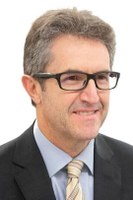
|
Professor Fernando Las-Heras, University of Oviedo, Spain
Fernando Las-Heras received the M.S. (1987) and the Ph.D. (1990), both in Telecommunication Engineering, from the Technical University of Madrid (UPM) where he was a National Graduate Research Fellow (1988-1990) and held a position of Associate Professor at the Dept. of Signals, Systems and Radiocommunications (1991-2000). From 2003 he holds a Full-Professor position at the University of Oviedo where he was the Vice-dean for Telecommunication Engineering at the Technical School of Engineering at Gijón (2004-2008). As of 2001 he heads the research group Signal Theory and Communications TSC-UNIOVI at the Dept. of Electrical Engineering of the University of Oviedo. He was Visiting Researcher at Syracuse University, New York, Visiting Lecturer at the National University of Engineering, Peru, and short-term Visiting Lecturer at ESIGELEC, France. He held the Telefónica Chair on “RF Technologies”, “ICTs applied to Environment” and “ICTs and Smartcities” (2005-2015). Member of the board of directors of the IEEE Spain Section (2012-2015) and the IEEE Microwaves & Antennas Propagation Chapter (AP03/MTT17) (2016-2017), member of the Science, Technology and Innovation Council of Asturias (2010-12), member of the “Advisory Committee of Radiofrequency and Health” and president of the professional Association of Telecommunication Engineers at Asturias. He has led numerous research projects, authoring a great number of scientific journals and conference papers in areas of antennas, metamaterials, inverse problems with application to antenna measurement (NF-FF, diagnostics and holography), electromagnetic imaging (security and NDT), localization, and on-board UAV applications, developing computational electromagnetics algorithms and technology on microwaves, millimeter wave and THz frequency bands.
Antenna measurements and signal processing techniques
The interest of in-situ measurement of antennas is presented since they enable fast antenna measurements at the placement where the antenna is located, assessing the antenna performance even in operational conditions. In the framework of novel communications systems, such as 5G networks, this capability is of special interest due to the disruptive features of 5G antennas such as adaptive beamforming and MIMO, where the environment also plays a key role in the overall performance.
Recent advances for in-situ antenna measurements are reviewed. There are three main challenges associated to in-situ antenna measurements: i) acquisition over non-regular grids, due to the difficulty to deploy a mechanical acquisition system, as those at measurement facilities (planar, cylindrical, or spherical ranges at anechoic chambers); ii) the difficulty in connecting the Antenna Under Test (AUT) and the probe, limiting the possibility of phase-locking for phase measurements; and iii) depending on the electric size of the AUT, measurements can only be conducted in the near-field region of the AUT, requiring an ulterior near-field (NF) to far-field (FF) transformation. Thus, the main techniques for phaseless measurements as well as their last advances are firstly reviewed. Next, two recently proposed systems for in-situ measurements are described. The first one is based on the use of Unmanned Aerial Vehicles to characterize outdoor antennas at remote places. The second one consists of a freehand portable system to characterize mm-wave antennas at accessible locations.
|
|
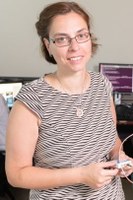
|
Associate Professor Alenka Zajic, Georgia Instiute of Technology, US
Alenka Zajic is currently an Associate Professor in the School of Electrical and Computer Engineering at the Georgia Institute of Technology. She has received the B.Sc. and M.Sc. degrees from the University of Belgrade, Belgrade, Serbia, in 2001 and 2003, respectively, and the Ph.D. degree in electrical and computer engineering from the Georgia Institute of Technology, Atlanta, in 2008. Before joining Georgia Tech as an assistant professor, Dr. Zajic was a post-doctoral fellow in the Naval Research Laboratory and visiting faculty in the School of Computer Science at the Georgia Institute of Technology. Dr. Zajic is the recipient of the following awards: IEEE Atlanta Section Outstanding Engineer Award (2019), The Best Poster Award at the IEEE International Conference on RFID (2018), NSF CAREER Award (2017), the Best Paper Award at the 49th Annual IEEE/ACM International Symposium on Microarchitecture (2016), the Best Student Paper Award at the IEEE International Conference on Communications and Electronics (2014), Neal Shepherd Memorial Best Propagation Paper Award (2012), the Best Paper Award at the International Conference on Telecommunications (2008), the Best Student Paper Award at the Wireless Communications and Networking Conference (2007), IEEE Outstanding Chapter Award as a Chair of the Atlanta Chapter of the AP/MTT Societies (2016), LexisNexis Dean’s Excellence Award (2016), and Richard M. Bass/Eta Kappa Nu Outstanding Teacher Award (2016). She was an editor for IEEE Transactions on Wireless Communications 2012-2017 and an executive editor for Wiley Transactions on Emerging Telecommunications Technologies 2011-2016.
Channel modeling at sub-millimeter wave and Terahertz frequencies
To enable future THz wireless communication between chips in a system and between blades and racks in large-scale data center systems, it is imperative to understand propagation mechanisms and to develop good channel models to enable communication between chips on a motherboard inside a computer system, between the motherboard and an add-on card (e.g. a graphics card), between boards/blades in a rack-mounted system typical for base stations, and between racks in a data center environment (with raised floors, rows of racks, cooling ducts, etc.). Note that these propagation environments significantly differ from typical wireless channels because there might be significant propagation losses due to signal interaction with metal and plastic parts of the packaging as well as from air circulation inside the packaging/data center. This talk summarizes the latest findings from 300 GHz measurements for computer motherboard and data center environments and reviews proposed channel models for these environments.
|
|
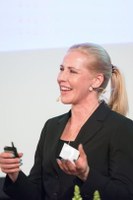
|
Professor Leena Ukkonen, Tampere University of Technology, Finland
Prof. Leena Ukkonen received M.Sc. and doctoral degrees in electrical engineering in 2003 and 2006, respectively, from Tampere University of Technology, Finland. Her Wireless Identification and Sensing Systems Research Lab at Tampere University, Faculty of Medicine and Health Technology concentrates on implantable and wearable biomedical sensors and wireless health technologies. Prof. Ukkonen has a wide research background and active international research collaboration networks in implantable sensors and design methods for wearable antennas and sensors. She has published over 360 peer-reviewed scientific articles. She is a member of IEEE and Associate Editor of IEEE Transactions on Antennas and Propagation.
Implantable sensors and antennas
In this presentation, we will focus on different aspects of backscattering-based wireless communication and power transfer to small biomedical implants. We will present three different antenna topologies for data and power transfer through tissue, in vitro and in vivo studies on implantable intracranial pressure (ICP) sensors and give insight and analysis on wireless link reliability in tissue environment. We will also present radio frequency identification (RFID) -based implant platform and communication method. Moreover, we will focus on differences and challenges of in vivo environment compared to laboratory phantoms and tissue models. In our studies, different types of implantable antennas have been tested to investigate reliability, accuracy and sensitivity of the brain implants: a hybrid near field-far field system with a piezoresistive sensor for ICP monitoring, a UHF band spilt-ring resonator system and LC tank based miniature implantable antenna. This paper will present these implant antennas and wireless power transfer in tissue environment present in human head.
|
|
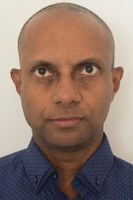
|
Professor Karu Esselle, University of Technology, Sydney, Australia
Professor Karu Esselle is the Distinguished Professor in Electromagnetic and Antenna Engineering at the University of Technology Sydney and a Visiting Professor of Macquarie University, Sydney. The 2019 Special Report on Research published by The Australian national newspaper, he was identified as the National Research Field Leader in Australia in Microelectronics (in Engineering) as well as in Electromagnetism (in Physics and Mathematics). Karu is the Chair of the Distinguished Lecturer Program Committee of the IEEE Antennas and Propagation Society, one of two selected candidates in the ballot for 2019 Society President and Chair of the Board of Management of Australian Antenna Measurement Facility. Previously he was Director of WiMed Research Centre and Associate Dean – Higher Degree Research. He has also served as a member of the Dean’s Advisory Council and the Division Executive.
Karu is in the College of Expert Reviewers of the European Science Foundation and has been invited to assess grant applications by many agencies including European Research Council and those in Norway, Netherlands, Canada, Finland, Hong-Kong, Georgia, South Africa and Chile. He has authored approximately 600 papers and has been cited about 9,000 times. Since 2002, his team has been awarded research grants, contracts and PhD scholarships worth about 20 million dollars. Karu’s recent awards include 2019 Motohisa Kanda Award for the most cited paper in IEEE Transactions on EMC in the past five years, 2019 Macquarie University Research Excellence Award for Innovative Technologies and 2019 ARC Discovery International Award.
Mobile Satellite Communication Terminals – State of the Art and Antenna Challenges
Established satellite operators are investing in new services and new satellite operators have committed billions of dollars to low-earth-orbit satellite constellations. Market analysts predict massive expansion of mobile satellite terminal market into new domains. Recognizing that the beam-steering antenna is the main cost item of a mobile satellite terminal and the established antenna beam-steering methods can’t meet the demands of the many new markets, such as low cost and low profile, new antenna beam steering methods are being invented and developed by both industry an academics. This invited presentation outlines the challenges, and reviews the state-of-the-art antenna beam-steering methods that are commercially available at present and being developed for mobile satellite communication terminals.
|
